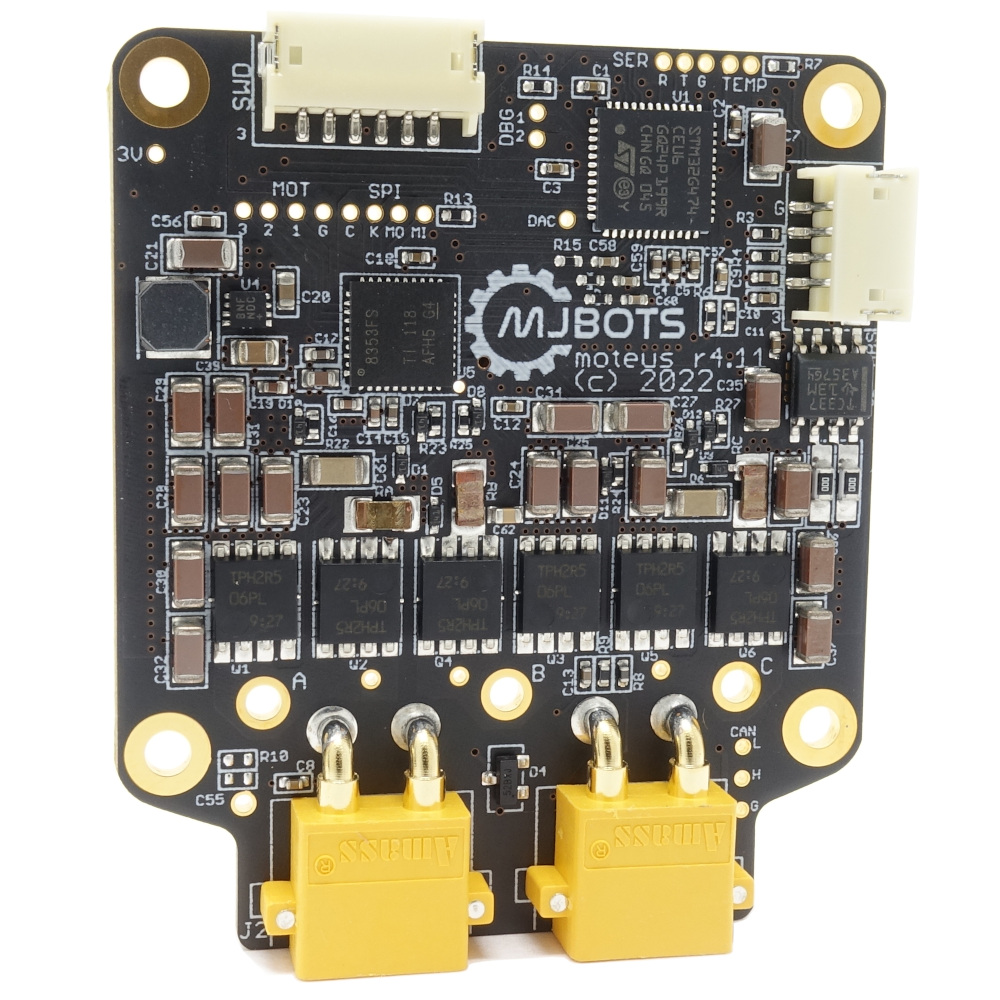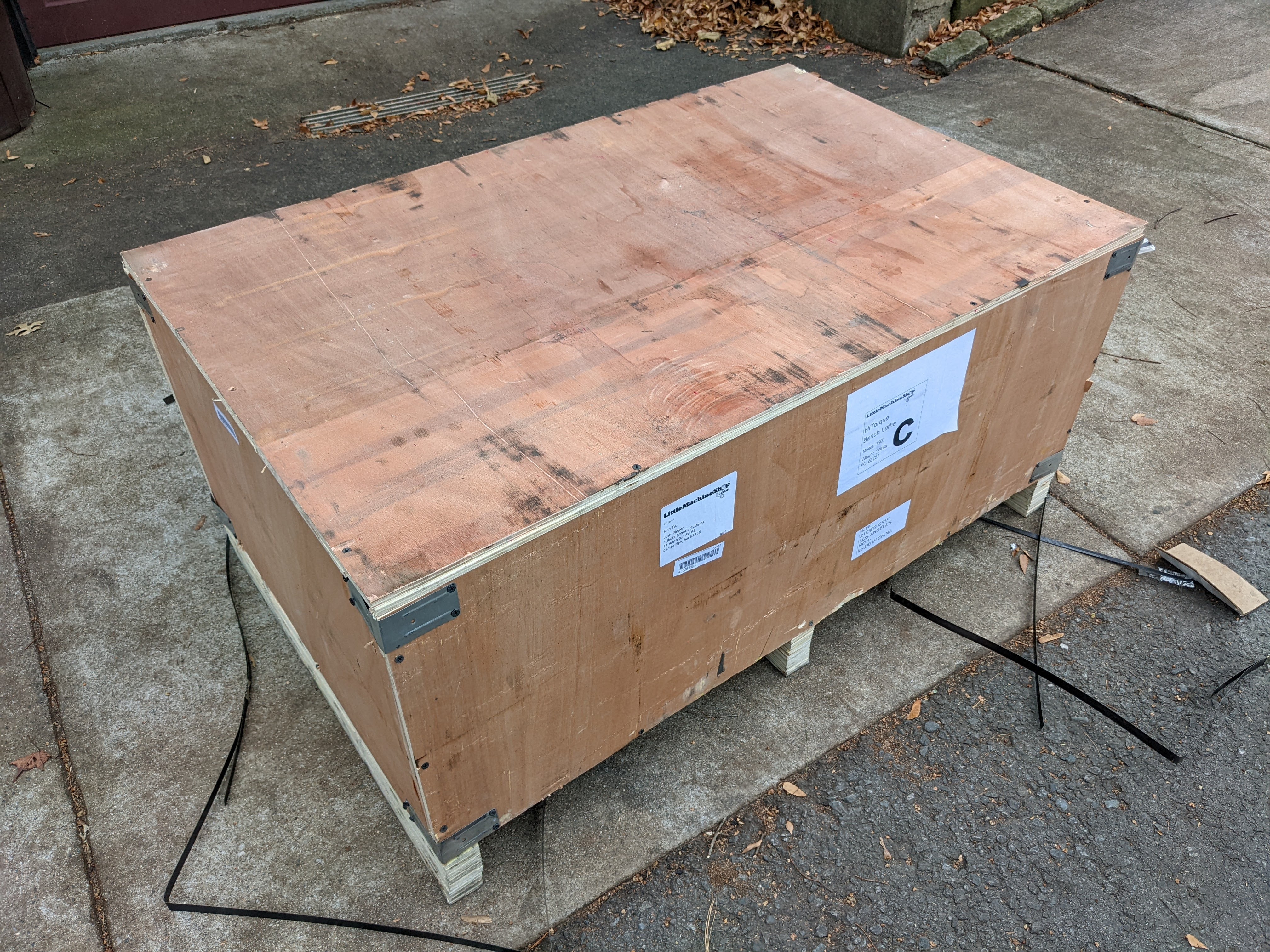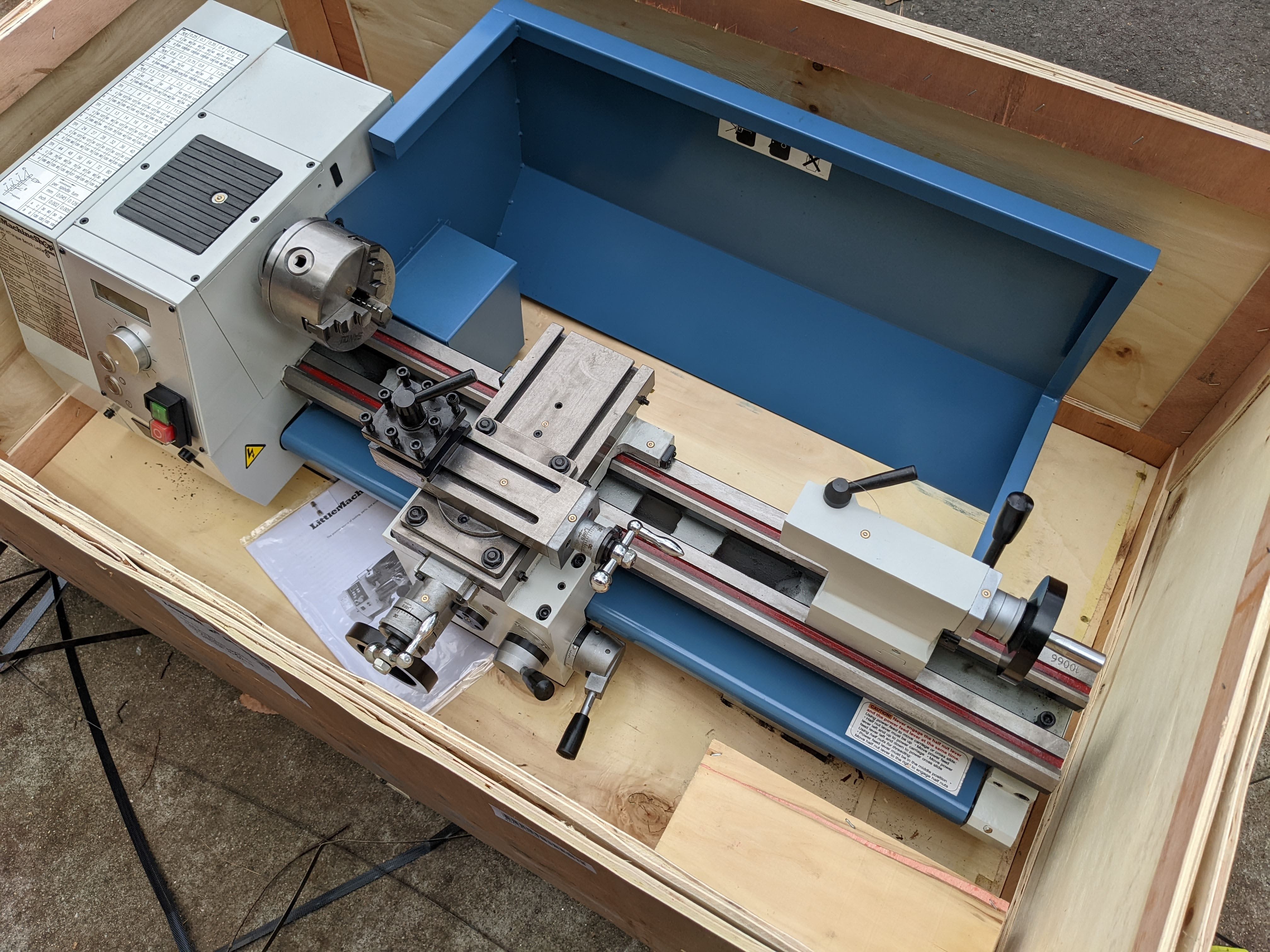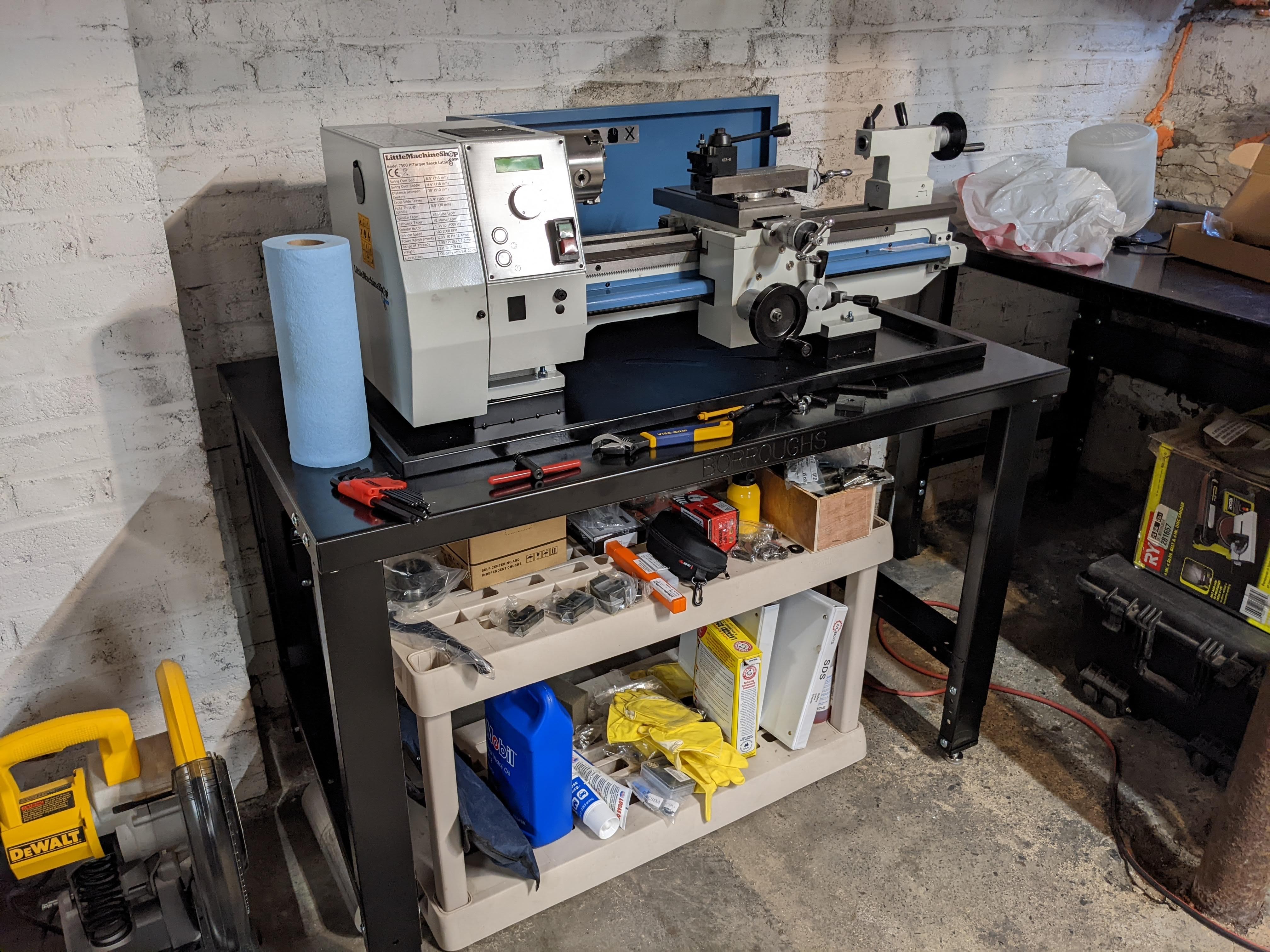Beginnings of more flexible encoder and I/O support
The moteus controller, being a brushless servo drive, needs to use encoders to measure things like how the rotor is positioned relative the stator, and possibly output shafts that have passed through a reducing stage. The support for this has gradually expanded over time, but is still relatively limited as far as those things go. The available options are:
- Primary encoder (used for commutation)
- The onboard AS5047P
- An external AS5047P
- Auxiliary encoder (optional, for measuring the output shaft)
However, the moteus hardware has always been capable of more, both because the processor is a very capable one, and the exposed IO pins are relatively flexible. While looking at some future designs that incorporate even more IO options, I decided it was time to update the firmware to finally start taking advantage of that flexibility.




